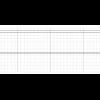Search the Community
Showing results for tags 'plumbing'.
-
Hi peeps! I'm hatching a plan to expand our current Squirrel-fed radiator system to also heat the calorifer. I have about zero plumbing knowledge... so the ideas below are all based on assumptions. I hope that by showing you the idea at this stage, I might not make hideous mistakes! I intend to use the newer 'push fit' pipes and fittings, as they're easier, not that much more expensive than copper, and the links to the calorifier already use them. I'd also like to have a solar collector as an option. As far as I can tell, the calorifier only has one coil (unless the other one is hidden beneath its insulation.) The drawing shows the boat as if it were just one continuous wall. I.e., port, stern, and starboard. This is because the calorifier is on the port side, and the burner/radiators are on the starboard side. I have to find a way to get the feed and return either around the back of the engine bay, or along the bulkhead dividing the bay and the living space, but beneath the doorway. The circles with crosses are taps - or three-way selectors, which I'm assuming exist. The bulkhead appears twice (port and starboard) The existing system has a bolan pump, but can also be used as a thermosyphoning system. I've sent the hot feed around the back of the boat, thinking that this might continue to operate (even though the cold return from the calorifier must travel uphill by about 100mm to rejoin the radiator system. An issue with this solution is that the pipe may loose too much heat to the hull / uninsulated engine bay. Another is: how do you mount pipes onto steel hulls! If thermosyphoning, or just running from one pump isn't an option, it might be more sensible to run the hot and cold feeds from the radiator system to the calorifier along the same route that the cold feed takes in this design- along the bulkhead (3d sketch might make more sense....) I suppose that's my main question at the moment. Is is a feasible idea? and, if so, should I run the pipes around the back of the boat (pictured), in a more gentle slope, or just go for the steep attack, use less pipe, but need a pump? The hot feed could be teed from the pipework just below the header tank instead. But would the single bolan (?) pump by the Squirrel be able to move the water that far? Assumptions. The original hot/cold pipes from the engine only have one shut off valve. It's my understanding that the pressure of the water in a circuit will prevent water from a different circuit from entering it when the tap is closed: water always follows the path of least resistance. For the solar circuit, there is a pump out there that will run on 12v, not consume insane amounts of power (though, on sunny days, our panel produces at least 8A), and be able to push the cold feed water to the roof. I require a separate header tank for the solar circuit, as it's higher than the current one. The solar circuit needs to be treated as a separate system, as if connected, pressure will release water from the lower header tank. Any help or suggestions on how this could be made better, or if it will even work, most appreciated!
- 12 replies
-
- hot water system
- solar
-
(and 2 more)
Tagged with:
-
Can anyone shed some light on a problem please? I am currently connected to shore line and have been heating the hot water via the immersion switch which up to a few days ago had been working fine. The last couple of days I have noticed that the water isn't staying hot for long and whereas you could easily have two showers and wash up we are only managing one shower before it goes cold. It is a Surecal 55lt calorifier which is under the bed horizontally (have read some negative comments on these types). I switched on the Eberspacher this morning which heated it up after about an hour and was fine and seems to work but again has gone cold quickly. How long do you need to keep the immersion switched on to heat the water up? Should you keep it on permanently or just switch on when needed? How long should the water keep warm for? Could I have a problem with the thermostat? Thanks
-
Hello all, I recently reinstalled my calorifier and plumbing during a major refit. There are only 4 outlets on the calorifier an inlet and outlet for engine coolant and and inlet and outlet for water. Before disconnecting anything I was very careful to note whiche pipes went where and noted 'cold in' and 'hot out' on the corresponding in/outlets. (there is additionally an outlet that has always been a bleed valve that was never touched) Its all connected up fine and is pretty much the same set up as before just with new piping. But I've noticed a few things that are different. The first thing I have noticed is the water pump runs for longer than before and takes longer to come on than before, this I assume means the accumulator is doing a better job for some reason? but this is trivial compared to the other thing... The cold taps are hot...and so are the hot taps. why might this be happening now when it wasn't before? I have the same fittings (bleed valves, stop cocks etc) as before in the same configuration. I assume that for some reason both taps are drawing water from the calorifier, or worse ALL the water in the boat is somehow being heated possibly including my water tank (not a great idea) An easy fix would presumably be to install a one way valve (if these exist in push fit form) in the cold feed just before the calorifier. But I would rather understand why this is happening... Any suggestions are much appreciated.
- 9 replies
-
- Calorifier
- plumbing
-
(and 1 more)
Tagged with:
-
Hi all, I am currently renovating my narrowboat and I need to un-plumb and remove a washing machine. I have no water in my water tank at the moment so I know it's safe to remove it without worrying about flooding the boat, but how do I permanently remove all the plumbing and disconnect the pipes from the water tank? I'm hoping this is a very easy job and I'm just showing my total lack of knowledge here! I'd greatly appreciate any advice. Thanks
-
We are fitting out a boat so its bare bones and one thing we have the space for and really feel like we would get plenty of use from is a bath. We have a 1000L watertank. I am just trying to get to grips with what the hot water set ups are in boats. We do have a diesel heater which came with the boat which needs to be set up. I dont fully understand it that would need a calorifier to have the water stored in or can have instant hot water. Main thing im worried about is having to have two large calorofiers to fill the bath. I know also theres LPG boilers you can get. perhaps having the bath hot water run off that would be the best option? What sort of set ups do you bath owners have?
- 56 replies
-
My water pump (flojet R4405144A) recently developed a leak. It's been perfect for the 3 years I've had the boat and I imagine a long time before that too so decided to replace with the same model. When it arrived it had a very specific warning on the box that is has a bypass valve and shouldn't be used with an accumulator tank. My system does have an accumulator and i'd like to keep it if I can (no need for the pump to kick in if using water in the night etc). Even if the pump works well without an accumulator, I struggle to see how having one would be an issue, but wanted to sense check this first. I suspect my old pump had the bypass valve too and it isn't an issue(although this may have been added in the more recent versions of the same model). Before I installed it I wondered if anyone knew the logic or what kind of issues leaving the pressurised accumulator could cause theoretically? Thanks in advance!
-
Hi all, I've recently fitted a new Jabsco parmax 4 water pump and 5l accumulator. Now whenever the pump is turned on it sounds like a helicopter is landing on the boat, the noise is coming from down the side of the boat rather than the pump itself. The pump is on its rubber feet which I've loosened and has flexible pipe connecting it to the main water pipes. I've also played around with changing the angle of the pump to reduce vibration noise. When I reach down and touch the cold water flow I can't feel it vibrating excessively. Through online research it sounds like a water hammer and I have followed all the suggested steps in trying to remove the air from the system but couldn't find instructions for a boat and don't think that simply turning the cold water feed off and leaving the pump on will clear the pipes. Additionally the parmax 4 is higher rated than the pump I took out and doesn't seem to be very powerful, it won't power my bathroom and kitchen taps at the same time, I'm not sure if this is connected to the noise. Any insights would be gratefully recieved.
- 22 replies
-
- plumbing
- plumbing system
-
(and 2 more)
Tagged with:
-
Hi all, I am a bit stumped by a plumbing problem. We have hot water in the calorifer but the water coming out of the taps is cold. The hot water in the calorifer is heated by both the engine and the alde boiler and both seem to be heating it fine.the water coming out of the hot taps is clean and smells fine. We have had some recent issues with our engine cooling system whereby the thermostat wasn't opening and various hoses were leaking and hot feed perished and 4l of air bled from skin tank. We think this is fixed now (does presence of hot water in calorifer after a cruise prove this?) so I don't think issues with engine cooling system is causing our problem. But others might know better! Thanks all
-
I'm currently fitting out a 64ft narrowboat and have reached the point of fitting out the plumbing. I'm concentrating on the fresh water system, of which im adopting a very similar (if not identical) structure to C-Warm's schematic drawing...(see image link below) http://www.tnorrismarine.co.uk/images/cal1.JPG This system on paper looks pretty straight forward to me, I've sourced most of the parts yet connecting them together is a mystery to me. I'll be using push fit Hep2O which is relatively basic to fit, my concern lies more with installing the main components like the calorifier, water pump, accumulator tank, shower, valves etc... Has anyone installed a fresh water system and can guide me in the right direction? P.s - I'm very new to boating and unfamiliar with plumbing 'know how', hence theoretic or jargon related advice won't really help me, im much more apt at learning in a practical and visual method, I would be truly grateful if you could cater to that medium of information, regardless any help would be very much appreciated. Thanks in advance.
-
hi all - quick query. i unplumbed my paloma boiler to fit new worktops, and stupidly i forgot to make a note of which was cold inlet and which was hot outlet! it is a standard Paloma - looking at it from the front, the gas inlet is to the left, and then there are two water connectors in the middle and to the right. can anyone tell me which is which??? cheers!!
-
Hello, I live on a 45FT narrowboat, and few days ago my domestic water system started to play up. First it just bursted out with water when i opened tap then went on as usual, but since yesterday i keep loosing pressure after running taps for a while, and then i loose all pressure but the pump keeps running. It looks like it can output only certain amount of water then it fails. I have a flojet R4305 - 500 installed, i put some photos of model and arrangement here> https://www.dropbox.com/sh/f5wpaxhxsli0kok/uvBnpvbWbb I was trying to air the system using this trick i have found on anther forum> "Folks should get in the habit of turning off the water pressure and then opening one of the faucets to bleed the air out when they leave the boat to take the pressure off the pump diaphragm, then shut the faucet. When you return, and turn the pressure switch on again, the pump will run for a very short time." ...but it resulted extreme amount of bubbling noise in the system otherwise yielded no results, apart of having water for a while (plus some rust today!) then loosing all pressure again. so now i keep turning of the pump circuits to keep the pump from buzzing forever (it keeps coming back if i turn electricity on). It somehow fixes system for a little while, i have running water, the pump turns itself off when turning taps off(with a kind of odd delay), but then i loose pressure again. Please let me know if you have any idea how to fix it. Thanks Zsolt
-
morning all!! i recently replaced my water pump to something a bit more powerful as i had issues with water pressure and my paloma not working very well, now there is plenty of pressure, in fact so much so that the water does not have time to get hot enough now as it passes through the boiler too quickly (the opposite of what i had before which was water too hot, but with the addition of cold reduced the pressure and so stopped the boiler burning - they're pretty contrary and fickle these boats I'm finding out!!). the new issue is this: when i try and turn the hot tap down a little (or even the cold tap for that matter) the pump sort of only comes half on, judders a little and the lights flicker. what is going on with this???? with the old pump if i turned the tap down a little there would still be a steady decrease in pump speed, water pressure etc, now it seems like the pump only likes it when the taps are full on, not half on?? And why would this affect the electrics?? has anyone had this problem before? yours rather frustradedly SB
- 24 replies
-
- water pump
- electrics
-
(and 4 more)
Tagged with:
-
afternoon! i have a query about plumbing a new belfast sink into my galley. the waste fitting has a 1.5 inch screw thread. i want to get hold of an angled fitting that screws onto the base with a nozzle for a 20mm hose to drain the water out through the skin fitting. i have seen a few straight fittings like this, but because of the depth of the sink and the height of the skin fitting i need to have the fitting with a right-angled (or as close to it as possible) connector. all the angled connectors i've seen are for standard kitchen sinks with a screw insert to accept a central screw from the middle of the plug-hole. What i need is one that screws onto a 1.5 inch down-pipe waste. Does that make sense??? any advice would be much appreciated, as ever! to clarify: what i need is a fitting like this: http://www.ebay.co.uk/itm/CAN-SINK-WASTE-20MM-ANGLED-caravan-motorhome-camper-horsebox-boat-plug-bung-/130895601685?pt=UK_Campervan_Caravan_Accessories&hash=item1e79fc6015 but which screws onto the base of this: http://www.ebay.co.uk/itm/BELFAST-KITCHEN-SINK-WASTE-SLOTTED-CHROME-BRASS-METAL-BACK-NUT-WASHER-PLUG-/230829151390?pt=UK_DIY_Materials_Plumbing_MJ&hash=item35be7d549e
-
Hi all I'm trying to identify all the pipes from pic I've uploaded below 2x22mm flow and return from diesel heater (flow t off to calorifier) 2x15mm cold and hot in and out of calorifier 1x15mm coil return from boiler (seems to t off from another 15mm and not return of 22mm...?) Then there are 2 more 15mm pipes, (one 15mm with a drain off) What are these? I can't follow them down because it's not my boat. It's a pic I found online researching plumbing thanks
- 4 replies
-
- plumbing
- plumbing system
-
(and 1 more)
Tagged with:
-
And as my kitchen conundrum continues, thought I'd try and make some in roads to the side of the galley that will house my washer and dishwasher. I heard before that there is a particular washing machine favoured by boaters - might it have been a bit less deep or something? Anyway, I have a machine that is 550mm deep including the rear of its counter top that sticks out past the rest of the machine - it bodes reasonably well for fitting. I've looked at dishwashers - 550mm seems about the best (and pretty typical) for the depth of a standard 600mm wide machine. I'm thinking if there is not enough room for the plumbing behind, then I can just hack away at the ply sides of the boat. But I have two main questions - firstly, what are the waste water arrangements for these appliances? Out the side through a skin fitting I presume but should one still use a trap? Secondly - any clever ideas on how to get the water feed over from the other side of the boat? I'm thinking to run it under the floor but then it could leak... Obviously I could avoid any joins under the floor by bending the plastic pipe a bit - though that might be quite tight. Or is under floor piping a no-no? Could the pipe freeze or is it a bsc fail? I've got the bsc pdf now so will see what I can find in there but I wonder what others have done? thank you
- 54 replies
-
- dishwasher
- washing machine
-
(and 3 more)
Tagged with:
-
Long story short; Needed to take out a water filter tap from the kitchen sink. Realised it had been fitted I'm such a bodge way it wasn't as simple as take it out plus connecting pipes then reconnect pipes lift over. After many trips to the plumb centre a literally hours of work the remaining pipework is now fitted correctly together with no jubilee clips or leaks. So turn water back, still no leaks, very happy. But... The water pump keeps having to repressurise the system once or twice a minute. Nooooo! So the only things I can think of is: A: the pipe under the floor that requires the whole kitchen to come back out (already taken it out once to fix the previous bodge job, was not fun) has a leak in the join. But I can't hear anything, then again is could just be small. Or B: Could it be possible there is air in the system that would cause the pump to keep engaging? C: something else Any thoughts? I list sanity and brain power for this job days ago so I'm not sure what I should do next. Tears are very close I'm that fed up and beaten by this task.
-
Hi All, I am trying to install a sink and have two existing skin fittings on my boat that could serve as waste water outlets, however the internal fitting appears to be just a 2" length of standard piece of pipe (no thread) approx size 19mm/ 3/4". Is this normal? Could i use a hose connector http://www.asap-supplies.com/fittings-valves-strainers/fittings/brass-straight-hose-tail-connector-418053 and flexible hose pipe to provide an outlet from the sink? if so is brass or plastic better. Or is there a better way to do this? Thanks in advance Simone
- 17 replies
-
- skin fittings
- plumbing
-
(and 1 more)
Tagged with:
-
Hi all, I don't know if anyone has had a similar experience, but I'm having problems with my Rinnai water heater. The boat hasn't been used for months, and now the water heater isn't firing up when there is a demand for hot water. It worked fine before. The pilot light works fine, and I have temporarily removed the water filter in case it was blocked and affecting water pressure. I have also swapped the gas bottles to make sure that the gas pressure is sufficient. I installed the unit a couple of years ago, but I've probably only used it a dozen times, so it seems hard to believe that any of the components have worn out! Now that I've ruled out the 'cheap' solutions I'm guessing it's going to require a more expensive one. I've looked quickly at the spare part prices for these things and they seem pretty high. Can anyone suggest why the unit isn't firing up when I turn on the hot tap? I guess one reason is a split diaphragm, but why would it split after so little use. I should confess that I haven't drained it down until now, so maybe frost has something to do with it, but we haven't had any really hard frosts in the meantime, and in addition I haven't noticed any leaks. Thanks. Oh, just one more thing.... Is there an easy way to check the water pressure coming out of the tap? It doesn't seem great.... Thanks
- 5 replies
-
- Rinnai
- water heater
-
(and 1 more)
Tagged with:
-

Water spurt then delay - what's the cause?
SilverComet posted a topic in Boat Building & Maintenance
Hi, After many plumbing issues (PRV, ruptured tank, pump being set too high) we've gotten our plumbing back to normal, that is until we tried the taps, at some point in the 2 month plumbing fiasco we've either gotten an air block or we've had something break. We have water when turning the tap for 1 maybe 2 seconds at what feels like full pressure, then nothing for 10 or 15 seconds till the pump kicks in. It's worth noting the lowering in pressure was weeks before our major issues and was working for a good 6 weeks before everything was turned upside down. Does anyone have any ideas? I've tried raising the pressure, it worked for about 10 minutes then it was back to before. -
Hi All, I'm a relative newbie to narrowboating (one year living aboard at Peartree Bridge Marina in Milton Keynes, and cruising since last July) , and a complete DIY ninnie, and am seeking some advice regarding my Morso Squirrel back boiler. I love the stove, and relied on it throughout my first winter in the marina, but the back boiler part, even when it was working, was disappointing at best. It allegedly drove two small rads in the bathroom and bedroom, at the opposite end of my 57 foot boat, but even when it was working great, the results in the radiators were disappointing. I tried bleeding them, think I succeeded, but they still stayed tepid at best, even with a roaring fire going in the saloon. Also, the previous owners had the water circulated by a mains operated pump. That was fine when I was Marina bound, but as I am cruising away from marinas now, I needed this replacing with a 12 volt pump, which I had done whilst in MK as part of a general refit of the boat for it's new post Marina life. Since the replacement, the thing has never worked properly: either the pump speed has to be set so high it is screaming very loudly, or the water is pushed round so sluggishly that the system starts - 'kettling' - is that the word? - Making scary 'bags of hammers' noises at the stove, anyway, like it's about to explode, whilst vomiting central heating fluid from the expansion tank all over the engine room. So scary is all this in fact, that I've decided I can't risk using the stove at all til this problem gets fixed. I've found it impossible to find anyone competent to sort it out in my new area of operations around Burnley, Lancashire, on the Leeds and Liverpool, and with money now being very tight, I thought the simplest thing to do in any case would be to de-commission the back boiler part myself, reversibly, in place. What I had in mind was emptying the central heating system (though I don't know how to do that either), leaving the input and output valves to the boiler open, and simply cut the copper pipes to them, taking out about an inch, and capping off the pipes, so I can just use the stove without fear of explosion or central heating fluid disasters. My thinking is that if I leave the valves on the Squirrel open and the stove side pipes of the boiler uncapped, air can expand and contract safely through the boiler during use, and I can just use the stove as if it had no back boiler. That way, any future owner who wants to make use of the rads can simply hook up the pipes again, and do battle with the pump. Is this a safe plan? Will the stove operate safely without fluid in the back boiler? Will the boat be okay for the BSS exam if I do this? What should I think about regarding making sure the operation is reversible? All advice appreciated. Alexa
- 21 replies
-
- morso
- maintenance
- (and 4 more)
-
I currently have two skin tanks, one connected to a beta 38, which provides propulsion and the other connected to a beta 35, which runs a genset. The engines are never used simultaneously. The beta 38 skin tank is undersized, and while this hasn't been an issue yet on canals I'd like to connect the two tanks to allow for more cooling capacity if on rivers/tidal. Would a simple connecting hose/pipe between the two tanks be sufficient enough to allow coolant to flow between the tanks, if it is of sufficient bore i.e. 28mm?
-
Hi, I have just looked at a 36ft Springer (perhaps early 80's) narrowboat for sale, priced at 10,000, as a project boat. No survey yet - owners have had her for 3 years, in those years they have replated on both front and stern after a survey, and blacked and annoded once (now due for renewal) The project: 1. Pre-purchase: Survey + It is due blacking, annodes and engine service (potentially the costs of this, and any replating needed, could be deducted from 10,000 boat cost) 2. Interior Hull: Need to create access in the floor to the interior hull as it there is currently no hatch etc. - Whilst doing the floor, thought would be a good idea to swap (apparently lumps of metal) ballast for engineering blocks, and, do work on the interior steel hull if needed (wire cup brush, rust treat with Vactan, and overcoat with something - bilge paint OR red oxide???) - Then insulate, plywood boards, and wooden board flooring. 3. Panelling: Taking down wall and ceiling boards which have been B&Q bodged in, to be able to redo with nicer wood, but most importantly, electrics and plumbing. 4. Wiring: There is wiring for 12v and 240v, however 240v is not plugged in at the moment, and the owners are running off solar (owners don't trust the wiring) SO would need completely re-wiring the solar (as it is currently just strung around the boat), utility battery for ceiling lights, 12v sockets and 240v sockets, and waterpump for shower/water. 5. Plumbing: There is also plumbing, but they currently don't use as they removed the old watertank, and currently run off a jerry can of water for the sink, and a cassette toilet. The plumbing also currently runs under the floor, so all old plumbing needs to be ripped out, and replumbed in the wall cavities - would like to plumb in sink, shower and potentially septic tank toilet, and then need to get a new watertank. 6. Other Misc: There is a working gas oven and hob, which seems to be fine and functional, so maybe gas is ok? Also a good, working coal/wood burner. Although engine needs a service, she ran well, when they took us for a 1 hr cruise, i think it is a Lister aircooled engine. So, if the survey all went well, does this sound like too much - In all honesty this would be my first narrowboat, but I am on a budget, hence only being able to afford budget boats. Time is not an issue, although being able to live in it by spring would be great. Main questions; - does the tactic to restore the inner hull sound like an ok approach, if it needed doing? What is the realistic expectation for the steel interior hull of a 80's Springer? - is wiring/plumbing possible to do myself, or is it needed to have a professional for BSC and insurnnce? In which case, how much could i expect for full plumbing/wiring? - what work could i expect to do myself, and what should i look for quotes for? Any advice will be HUGELY appreciated in terms of costs expected, or time taken, or regulations to adhere to when doing up a boat. This boat, technically is liveable, as they have been fine for 3 years, but needing this work, what price for it would be realistic? Thank you!
-
Morning, a riddle for you all. Symptoms; - Pump running intermittently (every ~30seconds), but no evidence of a leak so far (checked all joints). (I also first replaced the pump and the issue has remained, so I've ruled pump failure out). - Engine coolant is mysteriously overfull (has not been touched since I flushed and refilled before winter, and has been at a good level until now). - Taste of antifreeze when showering. These issues all arose in the same week - is there any connection? My current theory is a failure in the coil connected to the engine in the calorifier. This is causing the pump to run, pushing water into the engine cooling loop, and simultaneously leaking engine coolant into domestic supply. Given the cost and contortion required to fit a new calorifier, are there any more tests I can try to confirm? Or has anyone got another solution? Many thanks, Andrew
- 8 replies
-
- plumbing
- calorifier
-
(and 1 more)
Tagged with:
-
Hi everyone so I was looking at the set up for the bath as the surveyor recommended fitting a non return valve. The thing that I have a question about is the point where the bath plug joins the hose which attaches to the pump. It seems the pump hose is screwed directly to the plug drainer and I'm concerned that this will mean loads of bits going in to the pump. I don't know how you would fit a trap though because the bath has no space under it. I don't know about this set up so any experience would be helpful. (Hope my description is clear enough I don't know right words for all this stuff yet!) Thanks
-
When I moved onto the boat I inherited a certain amount of 'creative' plumbing. There's a double coil calorifier heated from the engine and an Eberspacher 4 hydronic (it has an immersion as well). The Eberpacher used to feed a run of radiators the length of the boat as well as the calorifier. There's a header tank too and a mass of old capped polypipe, strange little t-junctions and spurs that don't seem to lead anywhere and so on. It looks like it was put in by Central Services from 'Brazil' on a bad day. Well, I finally got fed up with the superfluous radiators and ripped them out (the stove does a much better job of space heating) but I'd like to keep the Eberspacher to just heat the water in the calorifier from time to time - so I don't have to run the engine when I'm moored up. Also I've got a timer on it so I can heat up a tank of water for early morning use. Does anyone have a clear illustration of the minimal, safe arrangement of pipes and valves that I'd need to just use the Ebbie to heat the calorifier without short-cycling, tripping out etc? I assume a balancing valve on the way in (and out?) and the header tank still included. Most of the diagrams I can find (including on manufacturer sites) either show loads of radiators, bypass circuits etc or are alarmingly vague about valves etc. (i.e. don't show any). Thanks in advance. Patrick
- 5 replies
-
- eberspacher
- calorifier
-
(and 1 more)
Tagged with:








